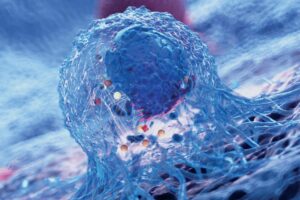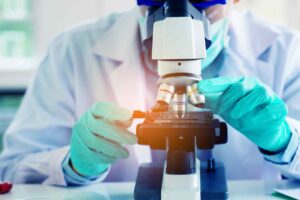What is already known
Obesity is influenced by both genetic and environmental factors such as excessive eating. Scientists have long suspected that gut microbiota can also affect metabolic processes and weight management, and previous studies found that specific gut microbes, including Ruminococcus, are linked to obesity. However, the functions of obesity-associated microbes remain unknown.
What this research adds
Researchers studied the gut microbiota of 631 obese and 374 normal-weight people, finding higher levels of Megamonas bacteria in obese individuals. Megamonas was associated with larger waist circumference, increased body weight and higher body mass index — a common proxy for obesity. In mice on a high-fat diet, a Megamonas species called M. rupellensis exacerbated weight gain, raised blood sugar and increased liver fat. Further experiments showed that M. rupellensis breaks down myo-inositol, which is crucial for fat metabolism and glucose regulation. Mice given M. rupellensis showed increase lipid absorption, contributing to obesity development.
Conclusions
The findings suggest that targeting Megamonas microbes could be used as a strategy for managing obesity.
Since 1990, global obesity rates have more than doubled, with about 1 billion people worldwide classified as obese in 2022. Researchers have now found that certain microbes in the guts of obese people play a key role in degrading myo-inositol — a compound that is involved in fat metabolism, increasing lipid absorption and promoting obesity.
The findings, published in Cell Host & Microbe, suggest that targeting these microbes could be used as a strategy for managing obesity.
The condition is influenced by both genetic and environmental factors such as excessive eating. Scientists have long suspected that gut microbiota can also affect metabolic processes and weight management, and previous studies found that specific gut microbes, including Ruminococcus, are linked to obesity. However, the functions of obesity-associated microbes remain unknown.
To establish causal links between specific gut microbes and obesity, researchers led by Chao Wu at Shanghai Jiao Tong University School of Medicine in China analyzed the gut microbiota of 631 obese people and 374 normal-weight controls.
Obesity indicator
The researchers found that specific gut bacteria, particularly those belonging to the genus Megamonas, were more abundant in obese people than in controls. Three Megamonas species — Megamonas rupellensis, Megamonas hypermegale and Megamonas funiformis — were associated with a larger waist circumference, increased body weight and higher body mass index, which is used as a common proxy for obesity.
Obese people with higher levels of Megamonas had higher body mass index and more severe metabolic dysfunction compared to obese people with lower Megamonas levels. “Overall, our findings highlight the significant enrichment of Megamonas in obesity and suggest its potential as an indicator for obesity,” the researchers say.
Further analyses indicated that both genetic predisposition and gut microbiota composition influence obesity, with the presence of Megamonas increasing obesity risk in genetically predisposed individuals.
Fat metabolism
To further explore the link between Megamonas bacteria and obesity, the team administered M. rupellensis to mice fed a diet high in fat. Mice that were given M. rupellensis while on a high-fat diet gained more weight, had higher blood sugar and showed increased fat deposition in the liver compared to control mice on the same diet.
Experiments in mice and in cells grown in a dish showed that M. rupellensis carries genes that break down myo-inositol, a sugar that plays a critical role in fat metabolism and the regulation of glucose levels in the body. Mice given M. rupellensis showed increased lipid absorption, which in turn led to obesity.
“These findings extend our insights into the role of specific obesogenic microbes and their cumulative effect on genetic risk in obesity development, pointing to possible future avenues for obesity intervention by targeted regulation of M. rupellensis and myo-inositol metabolism,” the authors say.











